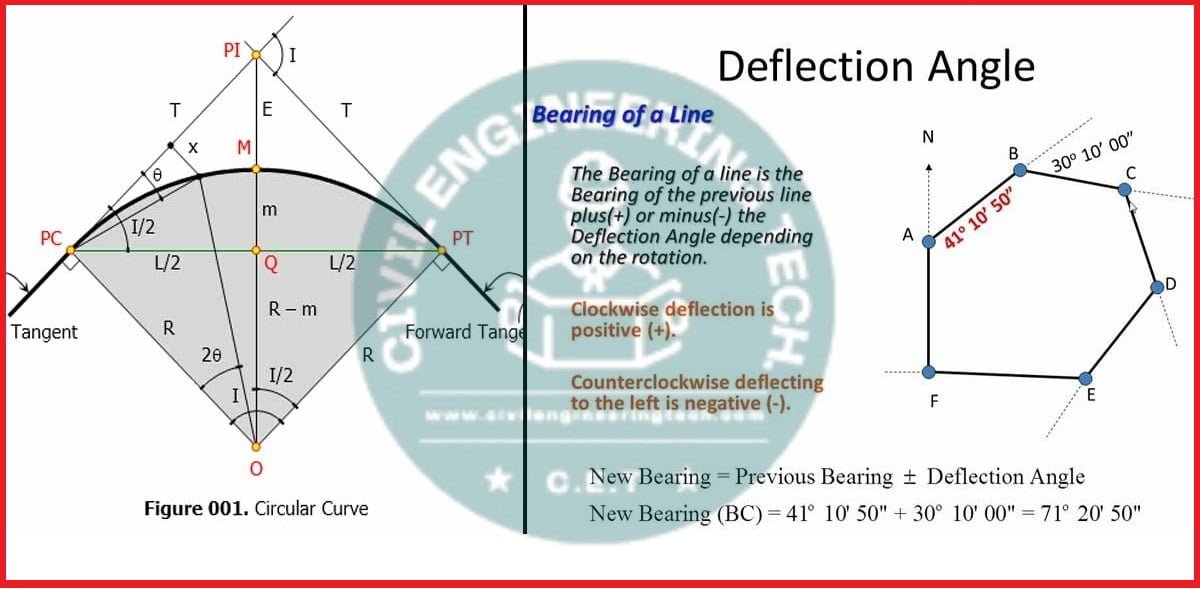
Basics Of Land Surveying
Land Surveying is the crucial procedure used to identify and map the terrain’s position. It plays a vital role in various tasks such as establishing land boundaries & ensuring accurate construction of the buildings. Despite being an age-old practice, the advanced survey tools and equipment available today provide unprecedented levels of precision. Basics Of Land Surveying.

Why Land Surveying Is the Important.
The Surveying is an indispensable aspect of major engineering projects. It plays a crucial role in the construction of the railways, highways, canals, skyscrapers, bridges, and more, ensuring precision and efficiency. While small structures may be erected without surveying, the construction of large buildings would be exceedingly challenging without it.
Consider the scenario of two individuals attempting to build a mile-long road from opposite ends. Without Land Surveying it would be nearly impossible to the seamlessly connect the 2 sections in the middle. Therefore, any land-based structure necessitates meticulous surveying to guarantee accuracy.
Types and Methods of Land Surveying.
The Land Surveying can be classified in some ways. There are 2 types of the surveying and several methods. Surveys can also be classified by the type of the instruments used.
Types of the Land Surveying.
The Geodetic surveying is utilized when considering the earth as a sphere, which is more intricate and usually reserved for extensive areas. It is commonly employed in projects that demand precise geographical and topographical data for the vast region. Conversely, plane surveying is a more straightforward approach that views the earth’s surface as flat.
Read More
Derivation of formula to set out the curves by the method of ordinates from a long chord
Estimation of the Material for Concrete
Components of Road Structure
What is contour interval and Uses of contour maps in surveying
The earth’s curvature is minimal, making geodetic surveying necessary only for the major undertakings. Oftentimes, it is more convenient & almost as precise to disregard the earth’s spheroid shape.
Classification Based on Method and Nature of the Land Survey.
Land Surveying can also be classified according to technique employed. Here are the few prevalent techniques utilized in surveying:
Astronomical involves mapping sections of sky using telescopes.
Boundary is used to find the measure and mark the boundaries of sections of the land (typically for the ownership purposes).
Construction is used to correctly layout key points of the construction or engineering project.
Control is utilized to determine the accurate placement of an arbitrary point.
Hydrographic is surveying used for bodies of the water to aid navigation, underwater construction and the water supply management.
Mining is land surveying used to locate and map underground and surface features for the mining operations.
Photogrammetric utilizes aerial photography to rapidly and accurately determine the position of the objects.
Read More
how to Calculate the height of an object using With theodolite
Concrete Slump Test workability Procedure and result
What is Best Practice in the Construction
Types of Maps in the Drone Mapping
Route provides controls and data necessary for the constructing transportation routes such as railroads, highways & canals.
Topographic measures the position and configuration of the terrain to create the topographical maps.
Classification Based on the Land Survey Instruments.
The Surveyors utilize various pieces of equipment in their work. Numerous techniques are developed based on the utilization of the specific instruments. Frequently, surveyors employ a combination of two or more instruments to achieve accurate results.
Chain
The chain is an ancient and straightforward method for the conducting measurements. It is used to measure distances by utilizing its length. Angles can be determined either directly or by moving one end of the chain by a known distance. To ensure efficient surveying, the area to be surveyed is typically divided into triangles.
Compass
The Surveyors can effectively measure angles using a prismatic compass. This is often combined with a chain to measure distances accurately.
Photographic
Rapid information capture about an area can be achieved through either land or aerial photography. In some cases, measurements of reference points are incorporated to determine the relative positioning of all the photographic data.
Plane Table
The plane table enables swift surveying by simultaneously plotting parts of the plan. Although not the most precise method, it is utilized to transfer angular information from measurements to the plan.
Theodolite
The theodolite is a precise tool for measuring angles. By zeroing the device using a reference point, horizontal and vertical angles can be easily calculated by directing the targeting lens towards the desired object. It is commonly used in the conjunction with a chain to measure distances. However, the theodolite has largely been replaced by the total station.
Read More
Thumb rule for Civil Engineers
What Is The RCC Concrete And Properties of RCC Concrete
What is the Long Wall Short Wall Method
What is the Differences between Pillar and Column
Tacheometer
This specialized form of theodolite incorporates a stadia diaphragm and an analytic lens. It eliminates the need for a chain as distances can be calculated using the diaphragm. However, this method has been nearly entirely replaced by the use of the total station.
Total Station
The total station is essentially a theodolite equipped with an electronic distance measuring system. With the electronic distance measurement (EDM) feature, distances can be measured without the use of the chain. This allows a single surveyor to gather a significantly greater amount of information within a shorter period of time.
Measurements & Leveling.
The Distance measurements can be obtained through the utilization of electronic or chain measuring tools. Nevertheless, they can also be computed using trigonometry, specifically by employing the Pythagorean theorem. Typically, angles are measured using precise tools that operate on the sexagesimal system.
This system divides a complete circle into 360 degrees. Each degree can be further divided into 60 minutes, and each minute can be divided into the 60 seconds. Consequently, a full circle comprises 1,296,000 seconds, which is an exceedingly accurate system. Leveling is the accomplished by combining the spirit level or electronic level with an optic level.
This combination is employed to align leveling rods and ascertain the relative elevations of different land areas. In certain cases, GPS or an altimeter is utilized for leveling on a larger scale.
Other Post
Civil Engineering Interview Questions and Answers
Calculation of Bricks and Blocks in the Wall
Civil Engineering Basic Field Knowledge






One Comment